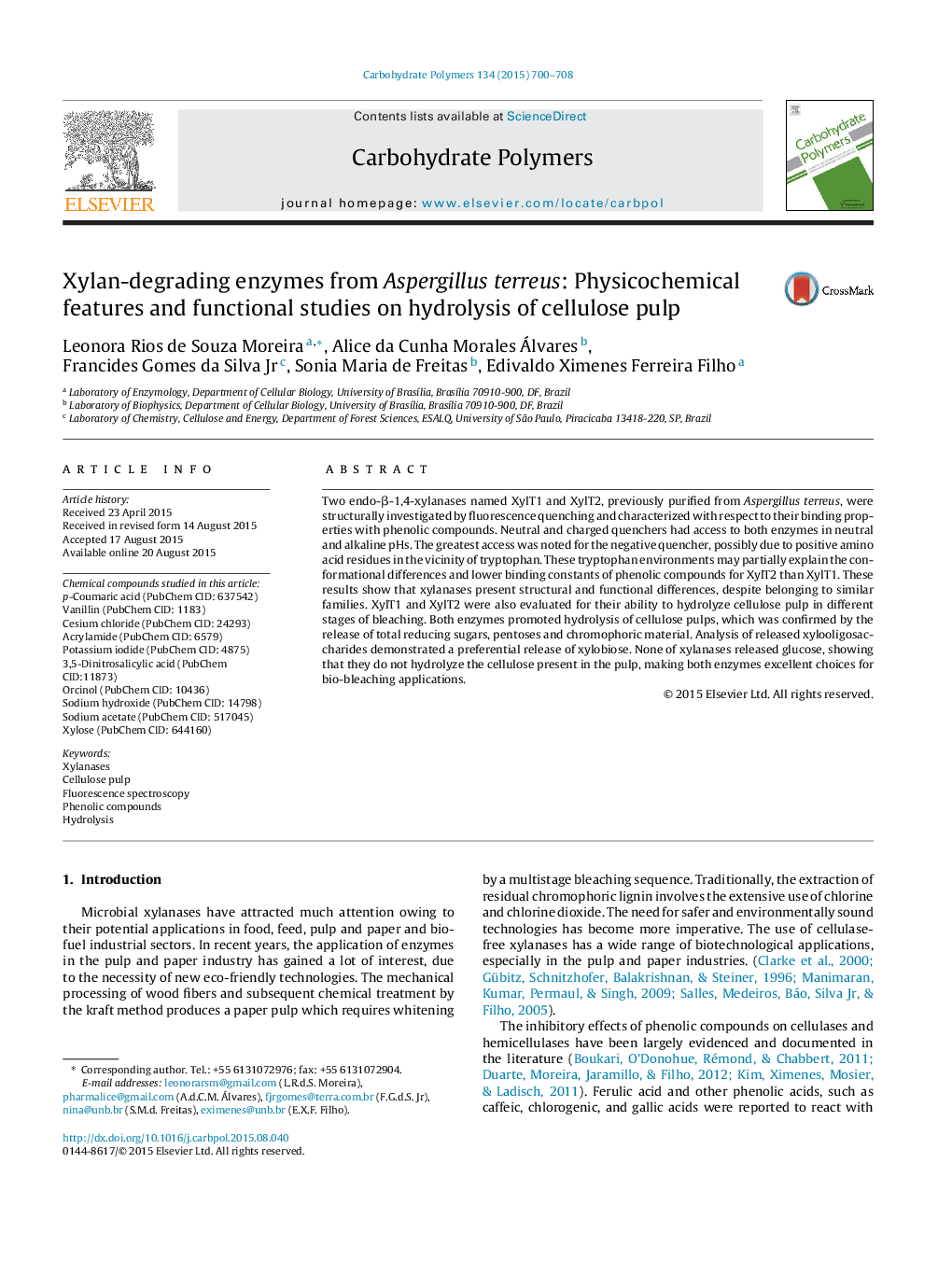| Article ID | Journal | Published Year | Pages | File Type |
|---|---|---|---|---|
| 7787299 | Carbohydrate Polymers | 2015 | 9 Pages |
Abstract
Two endo-β-1,4-xylanases named XylT1 and XylT2, previously purified from Aspergillus terreus, were structurally investigated by fluorescence quenching and characterized with respect to their binding properties with phenolic compounds. Neutral and charged quenchers had access to both enzymes in neutral and alkaline pHs. The greatest access was noted for the negative quencher, possibly due to positive amino acid residues in the vicinity of tryptophan. These tryptophan environments may partially explain the conformational differences and lower binding constants of phenolic compounds for XylT2 than XylT1. These results show that xylanases present structural and functional differences, despite belonging to similar families. XylT1 and XylT2 were also evaluated for their ability to hydrolyze cellulose pulp in different stages of bleaching. Both enzymes promoted hydrolysis of cellulose pulps, which was confirmed by the release of total reducing sugars, pentoses and chromophoric material. Analysis of released xylooligosaccharides demonstrated a preferential release of xylobiose. None of xylanases released glucose, showing that they do not hydrolyze the cellulose present in the pulp, making both enzymes excellent choices for bio-bleaching applications.
Keywords
XylanasesPotassium iodide (PubChem CID: 4875)Vanillin (PubChem CID: 1183)Xylose (PubChem CID: 644160)p-Coumaric acid (PubChem CID: 637542)Acrylamide (PubChem CID: 6579)Sodium acetate (PubChem CID: 517045)Phenolic compoundsFluorescence spectroscopyHydrolysisSodium hydroxide (PubChem CID: 14798)Cellulose pulp
Related Topics
Physical Sciences and Engineering
Chemistry
Organic Chemistry
Authors
Leonora Rios de Souza Moreira, Alice da Cunha Morales Álvares, Francides Gomes da Silva Jr, Sonia Maria de Freitas, Edivaldo Ximenes Ferreira Filho,
